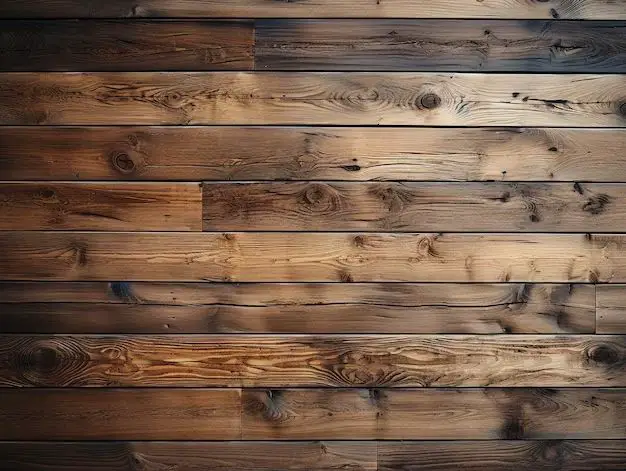WD-40 is a popular household lubricant and protectant that has been around since 1953. With its recognizable blue and yellow can, WD-40 is found in many garages and toolboxes. But can you use WD-40 on wood surfaces? The short answer is yes, WD-40 can be safely used on some wood surfaces. However, there are some important factors to consider before spraying WD-40 on wood.
Page Contents
What is WD-40?
WD-40 was created in 1953 by a small company called the Rocket Chemical Company in San Diego, California. The researchers there were tasked with creating a water-displacing spray to prevent corrosion on Atlas rockets. After 40 attempts, they perfected the formula and called it WD-40, which stands for Water Displacement perfected on the 40th try.
The key ingredients in WD-40 are:
- Mineral oil – acts as a lubricant and protectant
- Low viscosity oil – provides lubricating properties
- Non-volatile hydrocarbon – gives WD-40 its staying power
- Corrosion inhibitors – prevents rust and corrosion
- CO2 propellant – provides the aerosol spray
While originally designed to repel water and prevent corrosion, people quickly discovered that WD-40 had hundreds of household uses. It can lubricate hinges and tools, loosen stuck parts, remove grease and grime, and protect metal surfaces. Over time, it became a staple in workshops and homes around the world.
Using WD-40 on Wood
WD-40 can be used on some wood surfaces, but there are some important considerations to keep in mind:
Types of Wood Finish
What type of finish is on the wood surface? WD-40 can damage certain finishes like shellac, lacquer and varnish. On bare, unfinished wood or wood with wax/oil finishes, WD-40 will not harm the surface and can be effective.
Indoors vs. Outdoors
Will the WD-40 be used on indoor or outdoor wood? For outdoor wood projects exposed to the elements, WD-40 can help protect against moisture damage. For indoor wood surfaces like furniture, excessive WD-40 could leave an oily residue over time.
Purpose
What do you want to use WD-40 for on the wood? Here are some common uses:
- Lubricate sticky wood drawers, doors, windows, etc.
- Loosen rusty screws, nails, or hinges in wood
- Remove adhesive residue like sticker glue
- Prevent outdoor wood from water damage and rotting
- Clean grimy garden wood tools like shovels and rakes
WD-40 can work for these specific jobs. But it is not an all-purpose wood cleaner or polish.
Using WD-40 Safely on Wood
When using WD-40 on wood, follow these tips for best results:
- Test on a small hidden area first to check for any adverse effects on the finish.
- Lightly spray WD-40 directly onto the wood surface and spread with a clean cloth.
- Only apply a thin coat. Too much WD-40 will leave an oily residue.
- Blot up any excess liquid with a paper towel to prevent pooling.
- Allow it to penetrate for several minutes and then buff dry with a clean cloth.
- For unfinished wood, allow 2-3 days curing time before exposing to heavy use or moisture.
- Reapply every few months if using outdoors.
Wood Surfaces NOT to Use WD-40
There are some wood surfaces that you should NOT use WD-40 on:
- Flooring – Can make wood floors dangerously slippery
- Cutting boards – Oily residue can transfer to food
- Fine wood furniture – Can damage sensitive finishes
- Antiques/collectibles – Consult an expert first
- Wood musical instruments – May harm delicate polished surfaces
It’s also not recommended for wood surfaces that will come in contact with food prep. The mineral oil residue from WD-40 could transfer to food.
Alternatives to WD-40 for Wood
For wood projects where WD-40 is not advised, some safer alternatives include:
Beeswax Wood Conditioner
Beeswax conditioner is food-safe and provides light water resistance. It maintains wood’s natural look.
Mineral Oil
Food-grade mineral oil protects indoor wood surfaces like cutting boards and butcher blocks.
Tung Oil
Tung oil is a natural drying oil that waterproofs outdoor wood projects.
Linseed Oil
Linseed oil penetrates deep into wood grain to condition and protect wood.
Lemon Oil
Lemon oil polish cleans, conditions, and freshens wooden furniture without a greasy feel.
Conclusion
WD-40 can be safely used on some wood surfaces like unfinished outdoor wood, garden tools, sticky doors and drawers. It lubricates, protects wood from moisture, and frees stuck parts. However, WD-40 is not ideal for all wood surfaces due to potentially damaging certain finishes. It should not be used on fine furniture, antiques, cutting boards, instruments, or flooring. Test first in an inconspicuous spot and apply minimally. Alternatives like beeswax, mineral oil or tung oil may be better options depending on the project.
| Surface | Use WD-40? |
|---|---|
| Unfinished outdoor wood projects | Yes |
| Indoor furniture with wax, oil or bare wood finish | Yes |
| Wood with lacquer, shellac or varnish | No |
| Wood floors or musical instruments | No |
| Wood cutting boards and utensils | No |
| Wood doors, cabinets, or drawers | Yes |
| Garden wood tools | Yes |
With responsible use on appropriate wood surfaces, WD-40 can be an effective tool for lubricating, protecting, and cleaning wood. Just be cautious before spraying it on fine wood furniture, floors or unfinished surfaces. Consider the alternatives for a safer wood conditioner when needed.
